#hares and autumn full moon
Photo
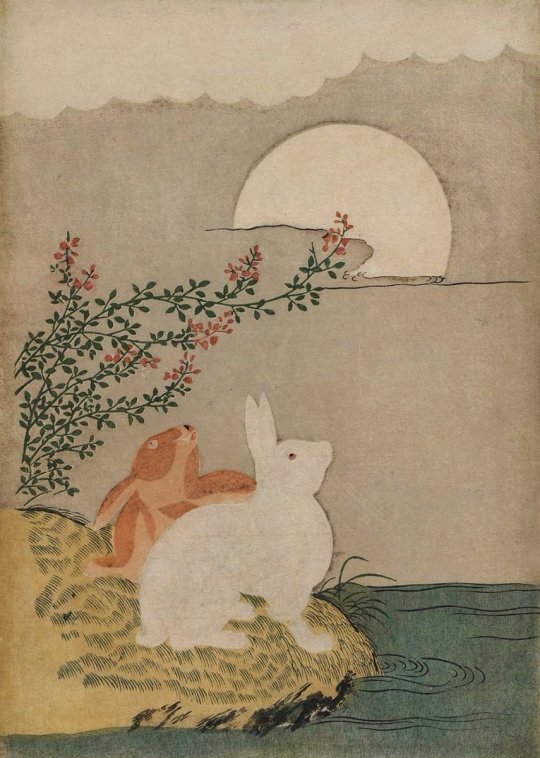




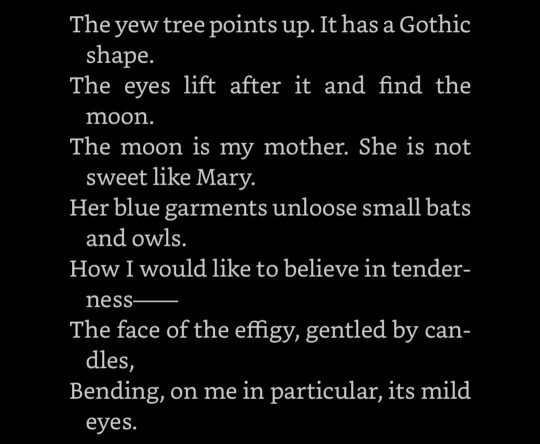
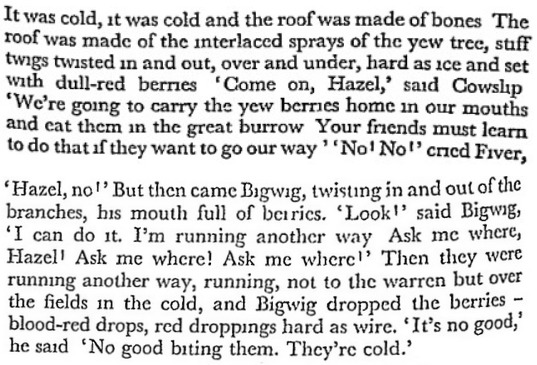
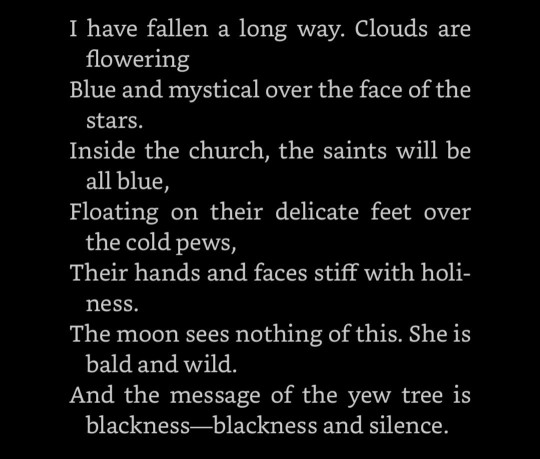


Suzuki Harunobu, Hares and Autumn Full Moon, Edo Period; Sylvia Plath, “The Moon and the Yew Tree”, 1961; Richard Adams, Watership Down, 1972; The Moon and the Yew Tree, Anthony Cockayne, 2014
#sylvia plath#the moon and the yew tree#richard adams#watership down#anthony cockayne#yew tree#web weave#yeah this is the entirety of the poem compared to passages from watership down what of it#long post#suzuki harunobu#hares and autumn full moon#web weaving
16 notes
·
View notes
Photo

Suzuki Harunobu
Hares and Autumn Full Moon
Edo period.
3K notes
·
View notes
Photo
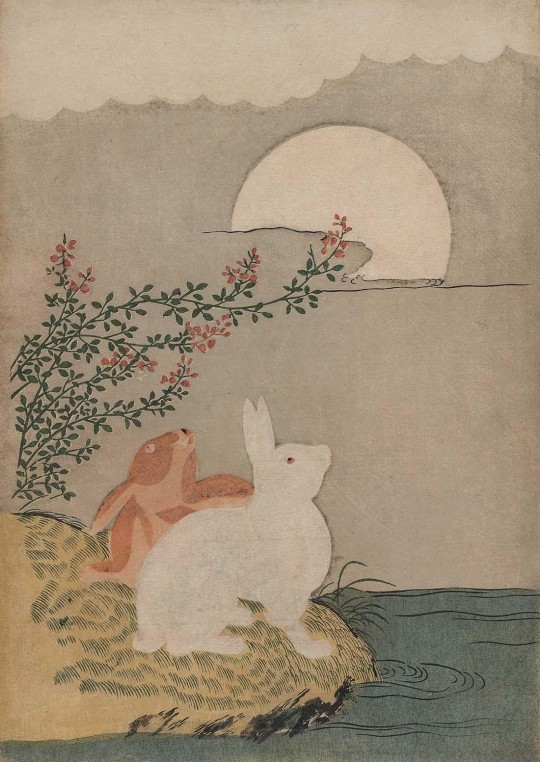
Hares and Autumn Full Moon attributed to Suzuki Harunobu (18th Century)
#suzuki harunobu#art#ukiyo-e#woodblock prints#fine art#18th century#18th century art#edo era#edo period#woodblock print#japanese art#japanese artist#nature art#hares#rabbits#moon#full moon#asian art#classic art
888 notes
·
View notes
Text


Propaganda below!
Bayonetta
Every game has a theme song that relates to the moon (Fly Me to the Moon, Moon River, Moonlight Serenade), which plays during the opening cutscene where Bayonetta dons her umbran uniform. Furthermore, her clan, the Umbra Witches, are the counterparts to the Lumen Sages, who's symbol is the sun.
Moon Hare
1. You know the most famous reference to this tale, is our favorite Sailor: Sailor Moon aka Usagi Tsukino!
2. Whether the bunny is very brave and smart or just dumb, it resulted in a nice annual day!
On the night of the Harvest Moon (the 15th day of the 8th lunar month), people gather to enjoy the beauty of the full moon for Otsukimi (お月見, literally “looking at the moon”). This moon festival, some-times called the Mid-Autumn Festival, is celebrated throughout Asia under different names. The tradition of celebrating the Harvest Moon came to Japan from China in the Heian Period (794-1185), a time known for the aristocrats' dedication to aesthetics and poetry. People would gather outdoors under the full moon and recite poetry, play music, and enjoy seasonal dishes. Over the centuries, it became a popular holiday for all classes to pray for a good harvest, offering fall produce like Sweet Potatoes and Taro to the Moon. Nowadays, Otsukimi is also called Jugoya, meaning "fifteenth night".
Mod note: the submitted image was actually a link to an article, so if you want to view said article, here’s the link https://mingeiarts.com/blogs/celebration-of-mingei-journey-through-japan/tsukino-usagi-the-moon-rabbit-beautiful-center-of-water-rabbits-selfless-and-making-mochi-on-the-moon
14 notes
·
View notes
Text
open to mutuals ( especially those of a shippy variety )

HE'S STARING AGAIN. not on purpose, of course: he's staring in the way one would pause & look at a work of art or a forest in autumn when everything is painted in rich reds & oranges -- like a sunset brought to earth for all to enjoy its beauty up close.
for this moment, gazing at his passenger, his expression is loose - relaxed, even. he'd almost look his age if not for the heavy bags under his eyes, which for once don't hold a bitter understanding of the world; rather, they hold a softness typically reserved for the rising sun & the silvery light of the full moon. beside him, his beloved hare daemon, hester, sits with a brow raised at her dear human. he's been acting so strange lately.
suddenly, lee is aware he's been caught, & he turns his head away, cramming his hat down to cover a blush that spreads across features that know the sun far too well.
" pardon, " he mutters, averting his gaze to the clouds that surround them as if they've suddenly become the most interesting thing in the world.
3 notes
·
View notes
Text
Zodiac: Twelve Souls — 7

< PREV | ARCHIVE | NEXT >
Ruler and Subjects
“It’s finally done!”
news
— New translated chapter posted.
— Tumblr chews up formatting in weird ways, so I have been tweaking these posts to try to improve legibility. You may notice some cosmetic changes.
— Next update target: May 31, 2022
notes
— Harm the Ox Clan at no gain:
Somewhat simplified. The original phrase, shown below, more precisely means something like, “…to the Ox Clan, a hundred detriments [upon itself] and not a single benefit.”
对牛族自身百害而无一利
— Dot dot dot:
In the panel right before Quan Diyan says, “I am going to Sevenstar Hill,” there is a bubble that contains only an ellipsis (“…”). This is technically an action bubble, not a speech bubble.
The bubble’s original contents:
yù yán yòu zhǐ
欲言又止
Wishing to speak, yet stopping.
All attempts to render this in English felt ham-fisted at worst and unnecessary at best. In the end, I decided that a simple “…” conveyed the feeling of the idiom better than any words could.
Kind of blows my mind that, in attempting to express a piece of language in another language, I ended up writing them both into nonexistence? Translation sure is wild
— Di-yuck:
Zhu Wujie refers to Quan Diyan as
那讨厌的家伙
or roughly, that annoying guy. Some light wordplay: the term for “annoying” (讨厌, tǎo yàn) shares the 厌 character with Quan Diyan’s name (犬地厌).
— Mid-Autumn extra - Tu Fei:
To understand why Tu Fei is here, one must first understand the significance of the moon in the Mid-Autumn Festival. Among the festival’s major traditions is 赏月 (shǎng yuè), admiring the full moon. (By design, the festival date always coincides with the night of a full moon.)
The moon itself is sometimes described metonymically as 玉兔 (yù tù, jade hare), in reference to the rabbit companion of the lunar goddess Chang’e. Here, Tu Fei simultaneously plays the role of the Jade Hare and Chang’e in Mid-Autumn iconography. Well done, A’Fei!
Also. Both the Jade Hare and Chang’e are closely associated with the elixir of immortality, so the line in the accompanying poem that wishes for longevity is very appropriate.
— Mid-Autumn extra - poem:
The specific poem in question is 《水調歌頭·明月幾時有》 (shuǐ diào gē tóu: míng yuè jǐ shí yǒu, “Water Melody: When Will the Bright Moon Appear?”), by the poet Su Shi. Here are the original characters included in the extra, from the poem’s final lines:
dàn yuàn rén cháng jiǔ
但願人長久
Would that our lives be long
qiān lǐ gòng chán juān
千裏共嬋娟
That even across a thousand miles we may share this lovely moon
For those interested in the full poem, here is a translation by Qiu Xiaolong.
For those interested in vintage Mandopop, here is a version of the poem rendered into song by Liang Hongzhi and performed by Teresa Teng.
I like to think that what sets the Mid-Autumn Festival apart from other harvest festivals (I say, wisely, while knowing a grand total of ~2.5 harvest festivals) is its particular flavor of Yearning.
Backing up a bit. Or a lot, actually. Maybe a thousand-ish years.
Su Shi was a scholar-official of the Song Dynasty, a period when the civil service examination system was in full swing. Thousands of hopeful applicants would flock to these exams in any given year. Some, like Su Shi, may have been coming from a literati background, but for many, it represented their biggest shot at upward social mobility. So there were all these people aspiring to be Going Places, and to do so they literally had to Go Places: they often had to travel. Far. The Middle Kingdom of the Song Dynasty was not as big as the China we envision today, but it was still big! You had to travel for the exam and each successive tier for which you qualified. You had to travel to occupy whichever government posting you were assigned afterward. You had to travel when exiled on accusations of political crimes. It was not uncommon for people to be separated from their families for long stretches of time.
赏月: To admire the full moon. The fullness of the moon in Mid-Autumn is supposed to symbolize reunion and togetherness. Ideally, it would be a time of gathering, but when you are very far away from all your important people, sometimes all you can do is watch the moon and think of them. This, too, is part of 赏月, and tell me that this isn’t the most Yearning thing ever: that gazing wistfully at the full moon like you’re the main character of a period drama is an actual tradition built into your thousands-year-old harvest festival.
Su Shi wrote his version of “Water Melody” during the Mid-Autumn Festival of the year 1076. He was a scholar-official in a family of scholar-officials, all well-versed in the strain of separation. He wrote this poem, drunk, under a full moon. He wrote this poem thinking of his younger brother Su Zhe, whom he had not seen in seven years.
…
Most of this post ended up being about a single bonus drawing that wasn’t even part of the main comic. Sorry! Sometimes you just get a lot of feelings about the Mid-Autumn Festival, deep into May. These things happen.
< PREV | ARCHIVE | NEXT >
#生肖十二魂#twelvesouls#manhua translation#quan diyan#zhu wujie#tu fei#chengyu#mid autumn festival#su shi#chinese poetry
0 notes
Text
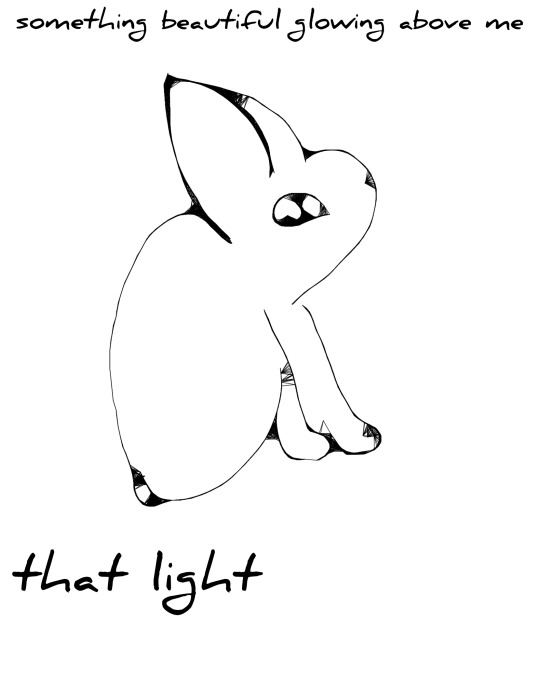
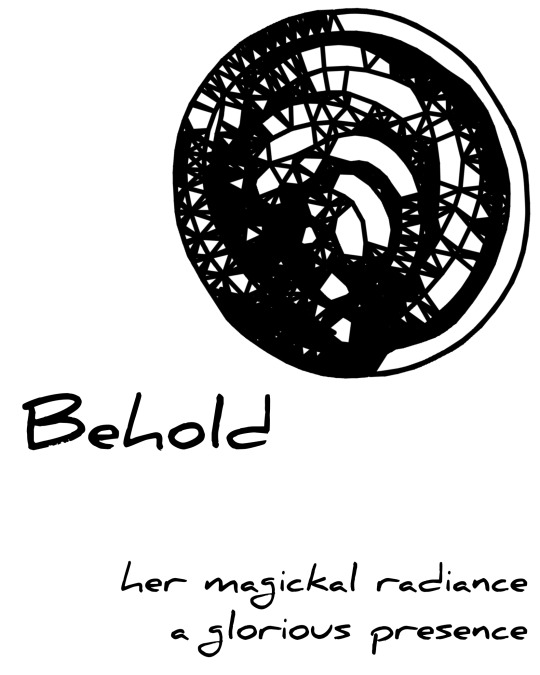

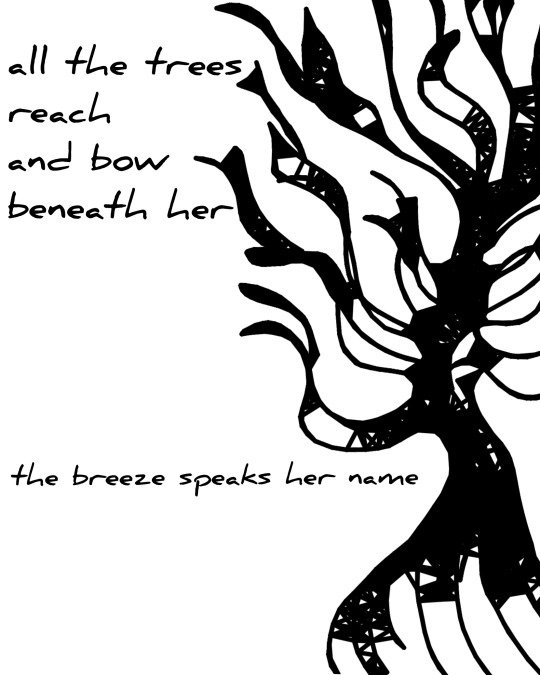
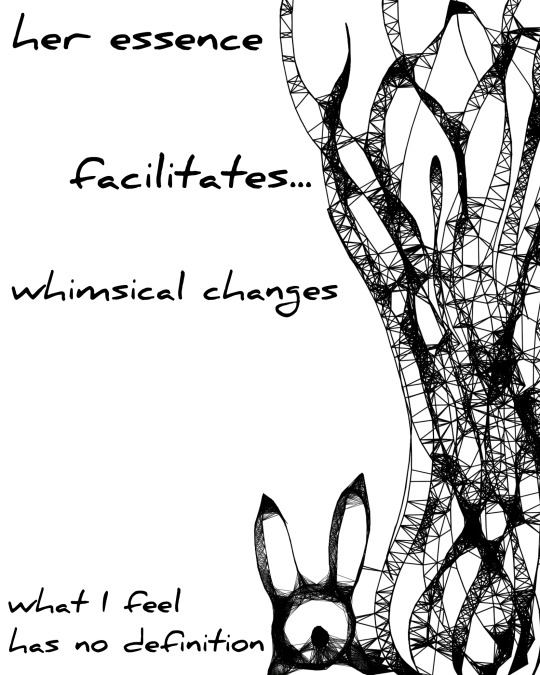
#comic#inktober#full moon#fae#rabbit#fairy#magic#magick#poetry#moon hare#shapeshifter#autumn#autumnal#october#beauty#elegance#whimsical#bunny#c3s5l8#digital art#ode to the moon#lunar blessings
9 notes
·
View notes
Photo
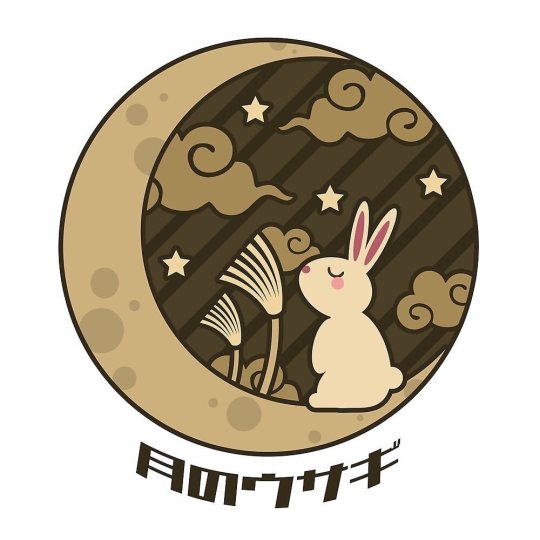
People in Japan believe that there are rabbits living on the moon making rice cakes. That’s why it’s the tradition to eat rice cakes while viewing the autumn moon. The Japanese characters say “Moon rabbit”. #japan #japanese #kawaii #otaku #manga #anime #sushi #onigiri #ramen #tokyo #osaka #findyourthing #matcha #greentea #autumn #bunny #rabbit #hare #moon #full moon #moon viewing #tsukimi #moon rabbit #月見 #うさぎ https://www.instagram.com/p/B9TU38En4BZ/?igshid=1rmichyfx6lqh
#japan#japanese#kawaii#otaku#manga#anime#sushi#onigiri#ramen#tokyo#osaka#findyourthing#matcha#greentea#autumn#bunny#rabbit#hare#moon#full#tsukimi#月見#うさぎ
0 notes
Photo

Suzuki Harunobu
"Hares and Autumn Full Moon", ca. 1760
Woodblock print
207 notes
·
View notes
Photo
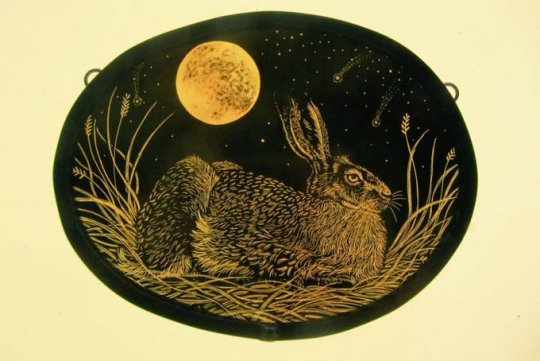
Harvest Moon (Golden Hare) by Tamsin Abbott, English stained glass artist. Harvest Moon is the full moon closest to the autumn equinox. The Celts would use the Harvest Moon to mark the time before Samhain and considered it a blessing
#WOMENSART@womensart1
45 notes
·
View notes
Text
Art by English stained glass artist Tamsin Abbott.
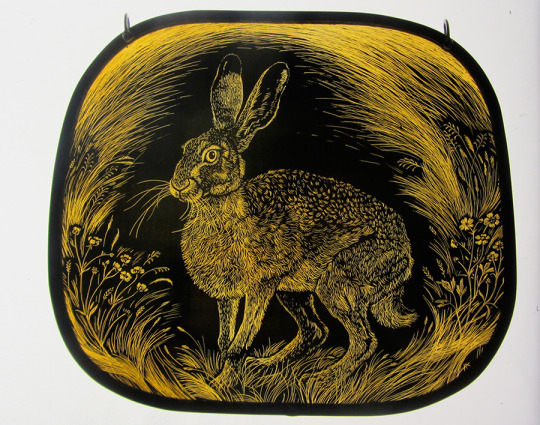
Buttercup Hare
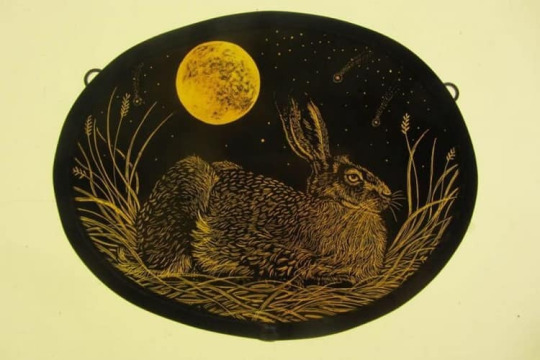
Harvest Moon

Golden Hare

Evening Star

Golden Fox
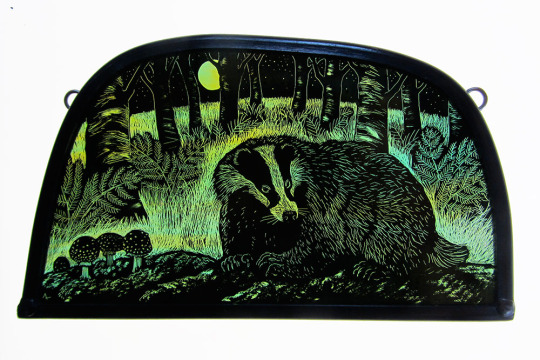
Old Brock
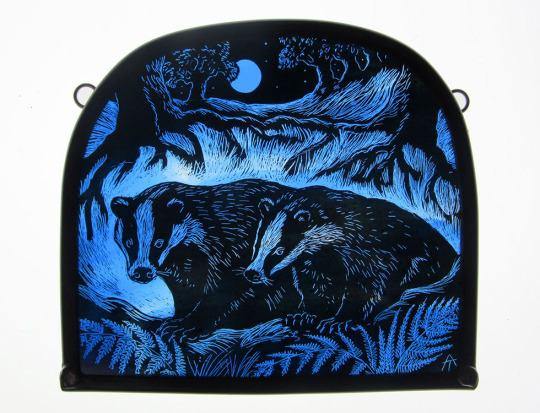
Full Moon Badgers
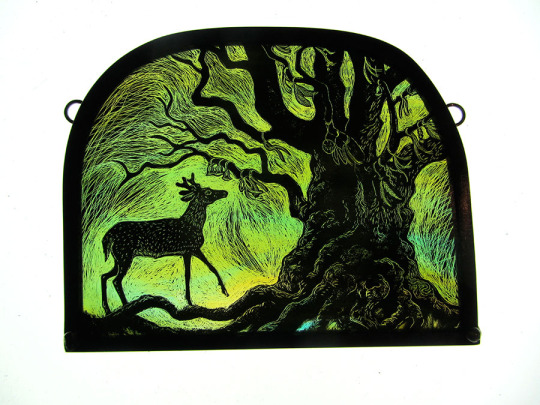
Young Stag Ancient Oak

Black Buck
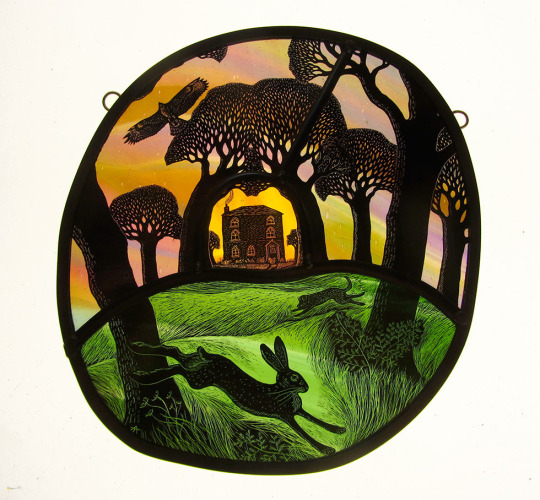
Raycomb House
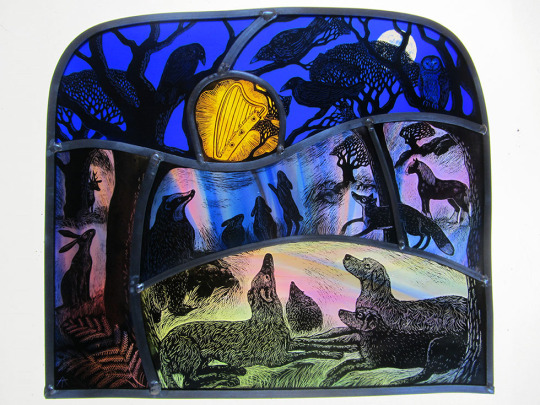
Golden Harp

Allotment of Plenty

Autumn Bonfire
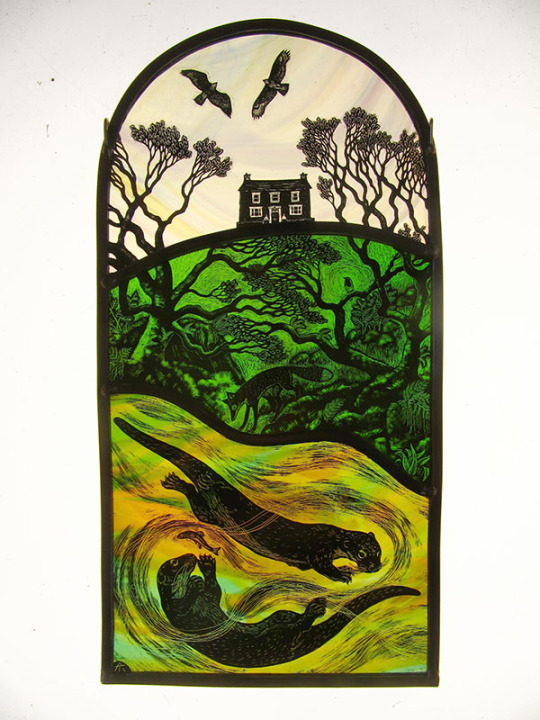
Otter House
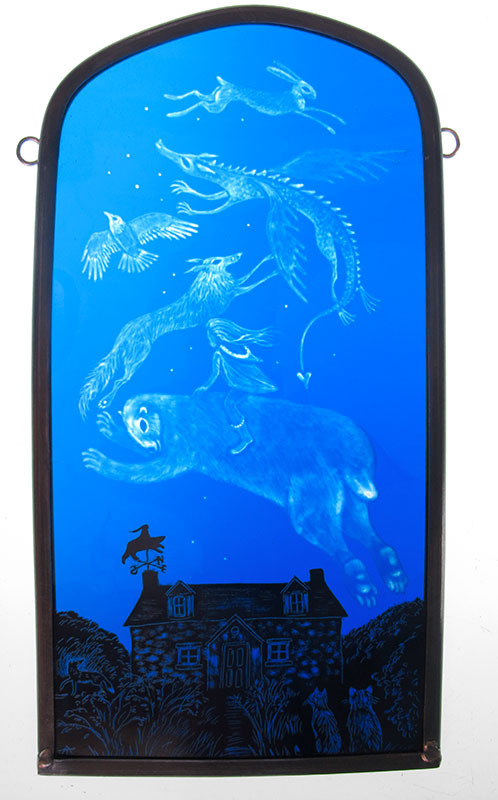
House of Golden Dreams
6 notes
·
View notes
Text
Elements, Direction and Time
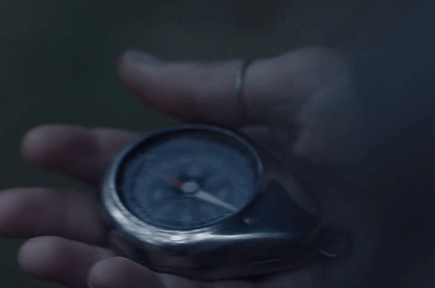
Tibetan astrology uniquely combines Chinese and Indian astrology. Originally brought to Tibet by bodhisattva Manjusri, Tibetan astrology was developed as a tool to explore the nature of apparent reality and relative truth. It is a system based upon a relational understanding between the directions of the Earth, the elements, the body, and the sky that underpins the foundation of Chinese astrology. This philosophy informs every day, month, and year. Below is a partial breakdown of this philosophy.
Directions
Cardinal directions and elements have associations with one another:
South [summer]: Fire
East [spring]: Wood
West [fall]: Metal
North [winter]: Water
While ordinal directions (SE, NE, etc) are associated with the Earth.
These elements are associated with directions, periods of time, activities of nature, organs, and the planets and are considered forces of transformation that continually come together in harmony or conflict.
Wood / East / Spring / Dawn / Vitality / Mobility / Liver / Jupiter
Fire / South / Summer / Midday / Ardor / Destruction / Heart / Sun & Mars
Earth / Center / Transitions / Fertility / Solidification / Spleen / Saturn
Metal / West / Autumn / Evening / Rigidity / Cutting / Lungs / Venus
Water / North / Winter / Night / Rest / Impregnation / Kidneys / Mercury & Moon
Animals were later developed to describe the characteristics of these transformations. Although they are most popularly known through their year associations, these characteristics are associated with with months, days, and even hours as well.
It is this cycle of time that is particularly interesting to my inner-astrologer, as understanding these flows can help us understand how the sky is impacting us. These cycles also view time as in context with historical patterns rather than stand-alone events that come out of nowhere as tends to be the perspective of rampant individualism.
Elemental Characteristics
Wood gives an animal sign mobility and vitality, creative power, and a softness. Wood years are transformative.
Fire gives an animal sign vitality, brilliance and transforming energy, as well as violence and intolerance. Fire years are marked by rapid evolution, conflict, and scarcity.
Earth gives stability to an animal sign along with realism and thoughtful action. Earth years are calm, prosperous and stabilizing.
Metal makes an animal sign rigid, cutting, and authoritative. Metal years are energetic and generally positive but disturbing. Few compromises can be expected.
Water gives an animal sign an open mind, flexibility, communication and intuition. Water signs are generally associated with thoughtfulness and sensitivity, but also passivity. Water years are auspicious for change and communication.
You have probably heard that this year is the year of the Metal Rat, but interestingly Tibet has a more descriptive name for this year: Kunden which means “Having all qualities” and pretty much sums up the ride we’ve been on. Tibetan year names are based on the Tibetan 60-year Jupiter cycle (adopted from India) made up a progression of elements, animals, and their resulting active or receptive polarities begin with the year of the Fire Hare and end with the year of the Fire Tiger.
Yearly Cycles
Year of the Rat is about prosperity, progress, growth and investment. It is not a year to take risks.
Year of the Cow is a year of toil that requires sustained effort to yield rewards. It is a bad year to stay idle.
Year of the Tiger is unpredictable, dramatic and full of sudden developments. It is turbulent and should be approached with caution.
Year of the Hare is a quiet, relaxing year that can sometimes manifests as lethargy.
Year of the Dragon is energetic and grandiose, an auspicious year for marriage and new beginnings. Usually characterized by natural disturbances.
Year of the Snake is a year of healing and rebirth. Many life-altering changes are likely akin to the snake shedding its skin. This is a powerful year where confidence tends to run high.
Year of the Horse is a great year for energetic and ambitiousness. It is a year that brings about the impulsive urge to complete projects
Year of the Sheep is a year of rest after effort, and is a good time to pursue the arts.
Year of the Monkey is an exciting year where anything can happen. A good year to seize new initiatives and take advantage of opportunity.
Year of the Bird is energetic but scattered. Many opportunities will arise, but it is difficult to see them through as distractions abound. Geopolitically this is a year associated with hardlining and repression.
Year of the Dog is idealistic and justice-oriented. It is a year that brings about reflection and generosity. The year feels a bit too serious and is favorable towards those with good intentions.
Year of the Pig is optimistic and indulgent. It brings prosperity and abundance but can lead to excess.
The elemental and animal associations align with Chinese astrology, but have additional descriptions in the Tibetan tradition. Below are the years’ English to Tibetan translations as they appear in Philipe Cornu’s Tibetan Astrology. Each year begins with the lunar new year (so January babies may be considered part of the previous year).
If a year you are interested in is not listed below, this calculator can tell you the corresponding element + animal.
1945 Wood Bird - Protector of Earth
1946 Fire Dog + Inflexible
1947 Fire Pig - All Conquering
1948 Earth Rat + Stopping All
1949 Earth Cow - Error
1950 Metal Tiger + Custom
1951 Metal Hare - Ass
1952 Water Dragon + Happiness
1953 Water Snake - Totally victorious
1954 Wood Horse + Victorious
1955 Wood Sheep - Intoxicating
1956 Fire Monkey + Ugly face
1957 Fire Bird - Gold pendant
1958 Earth Dog + Hanging
1959 Earth Pig - Transformer
1960 Metal Rat + Having all qualities
1961 Metal Cow - Wild dog
1962 Water Tiger + Virtuous
1963 Water Hare - Beautiful
1964 Wood Dragon + Terrible
1965 Wood Snake - Varied wealth
1966 Fire Horse + Evil-crushing splendor
1967 Fire Sheep - Monkey
1968 Earth Monkey + Dagger, Jupiter
1969 Earth Bird - Peaceful
1970 Metal Dog + Ordinary
1971 Metal Pig - Erroneous, contradictory
1972 Water Rat + Guardian
1973 Water Cow - Irreligious, impudent
1974 Water Tiger + Total joy
1975 Wood Hare - Insects
1976 Fire Dragon + Fire
1977 Fire Snake - Orange
1978 Earth Horse + Messenger of time
1979 Earth Sheep - All-accomplishing
1980 Metal Monkey + Ferocious
1981 Metal Bird - Evil-minded
1982 Water Dog + Great drum
1983 Water Pig - Blood-vomiting
1984 Wood Rat + Mars
1985 Wood Cow - Wrathful
1986 Fire Tiger + Exhaustion
1987 Fire Hare - Initial
1988 Earth Dragon + Totally Born
1989 Earth Snake - White
1990 Metal Horse + Totally drunk
1991 Metal Sheep - Lord of birth
1992 Water Monkey + Name
1993 Water Bird - Glorious face
1994 Wood Dog + Substance
1995 Wood Pig - Yellow
1996 Fire Rat + Holder
1997 Fire Cow - Mighty Lord
1998 Earth Tiger + Much grain
1999 Earth Hare - Mad, drunk
2000 Metal Dragon + Oppression
2001 Metal Snake - Perfect cube
2002 Water Horse + Varied
2003 Water Sheep - Sun
2004 Wood Monkey + Liberating Sun
Some of these names are more metaphorical than others (e.g, blood is associated with wisdom and intoxication takes many forms), but more importantly point to the interaction between the element and the animal of that year. Likewise, the effects of the year can be calculated according to element and animal friendliness.
57 notes
·
View notes
Photo


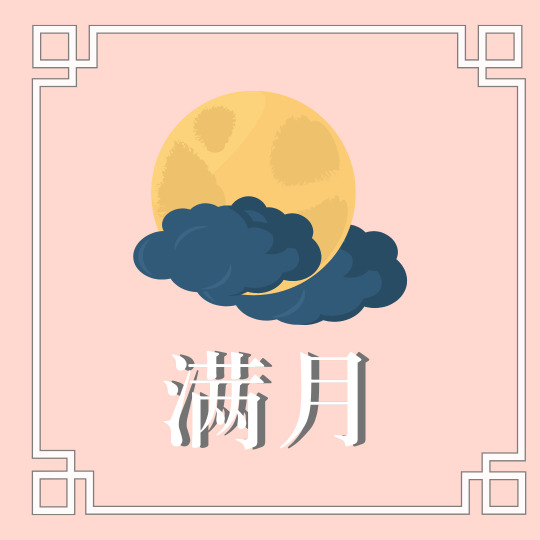

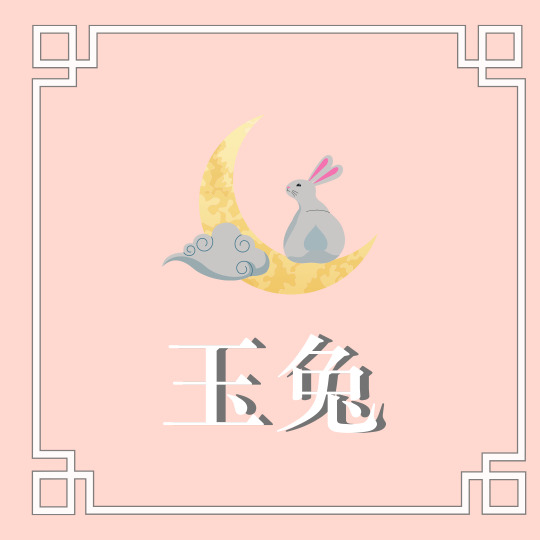
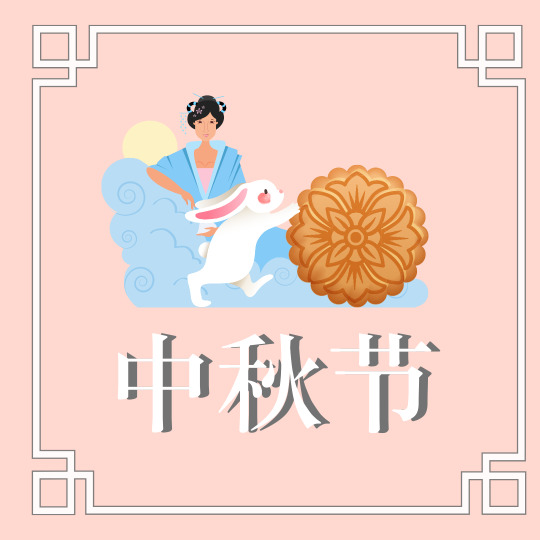
中秋节是每年的农历八月十五日。这时是一年秋季的中期,所以被称为中秋。八月十五的月亮比其他几个月的满月更圆、更明亮,人们仰望天空朗朗明月、自然会期盼家人团聚,所以中秋节又称“团圆节”。在中国古代,人们有月下游玩、赏月、互相赠送月饼等节日习俗。现代虽然节庆活动没有古代那么盛行,但人们也往往在这一天与家人相聚,品美食、吃月饼、赏圆月,一起庆贺美好生活,并为远方的亲人和朋友祝福。
中秋节是中国文化非常重要的组成部分,关于中秋节的起源,有很多不同的传说。其中最广为人知的是关于月亮女神嫦娥的传说。为保护丈夫后裔的仙药不被贪婪的人抢走,无奈之下嫦娥吞下仙药。没想到便向天上飞去,从此以后她就一直在玉兔的陪同下,居住在天上,永远的和自己的丈夫分开了。
据记载,中秋节的庆祝从唐朝早起就开始了。据说在中秋节的时候,人们可以看到嫦娥在月亮上跳舞。庆祝中秋节最常见的方式,就是一起吃嫦娥最喜欢的食物,月饼。
For English translation, go check Fuzi Zhongwen on Instagram!
Source: Fuzi Zhongwen
📓 生词 📓
中秋节 zhōng qīu jié - the Mid-Autumn Festival
农历 nóng lì - the lunar calendar
满月 mǎn yuè - full moon
仰望 yǎng wàng - to look up at
朗朗 lǎng lǎng - clear, bright
明月 míng yuè - bright moon
期盼 qī pàn - hope and expectation
团聚 tuán jù - to reunite
盛行 shèng xíng - to be in vogue
相聚 xiāng jù - to meet together
月饼 yuè bǐng - mooncake
远方 yuǎn fāng - far away
祝福 zhù fú - to wish sb well
组成部分 zǔ chéng bù fèn - part, component
起源 qǐ yuán - to come from, to originate, origin
女神 nǚ shén - goddess
嫦娥 Cháng é - Chang'e, the lady in the moon
后裔 hòu yì - descendant
仙药 xiān yào - legendary magic potion of immortals
贪婪 tān lán - greedy
抢走 qiǎng zǒu - to snatch
吞 tūn - to swallow
玉兔 yù tù - the Jade Hare
陪同 péi tóng - to accompany
居住 jū zhù - to live in the place; to reside
- - - - - - - - - - - - - - - - - - - - - - - - - - - - - - - - - - - - - - - - - - - - - - - - - -
🥮 My Instagram (click) 🥮
大家!中秋节快乐!🎑
#mooncake#chinese#learn chinese#learn mandarin#study chinese#langblr#mid autumn festival#mid autumn#中秋节#chinese culture#china#中国#graphic#polyglot
38 notes
·
View notes
Text
Playlist: Halloween Part 1 [#-L] 🎃
This isn't really a playlist as much as it's a masterlist of songs I've been collecting for years with the intention to group together into smaller Halloween and sabbat themed playlists.
There's goth (old & new), folk, metal, rock, movie themes, soundtrack scores, horror punk, new wave, new age, 50s horror bop, 70s esoteric prog rock, and songs from various Halloween specials with a hard focus on 80s TV specials.
➡️ youtube: Halloween Part 1 [#-L] playlist ⬅️
Long Play;
13 Vintage Halloween Songs from the 1910s, 20s, & 30s, Various Artists {listen}
A Hornbook For Witches, Vincent Price {listen}
Bram Stoker’s Dracula: full soundtrack, Wojciech Kilar {listen}
Buio Omega: full soundtrack, Goblin {listen}
Peter and the Wolf, David Bowie {listen}
Texas Chainsaw Massacre, The, Tobe Hooper & Wayne Bell {listen}
();
(Don’t Fear) The Reaper, Blue Öyster Cult {listen}
(Don’t Fear) The Reaper, Unto Ashes {listen}
(Every Day is) Halloween, Ministry {listen}
(Every Day is) Halloween (2019), Ministry {listen}
#;
#1 Crush, Garbage {listen}
7 Devils, The Goddamn Gallows {listen}
A;
A Clockwork Orange: Title Music, Wendy Carlos {listen}
A Forest, The Cure {listen}
A Nightmare on Elm Street: Prologue/ Main Title, Charles Bernstein {listen}
A Question of Blood, Jean-Michel Jarre & John Carpenter {listen}
A Witches Song, Ordo Funebris {listen}
A’soalin, Peter, Paul & Mary {listen}
Aisha, Death in Vegas feat. Iggy Pop {listen}
All Hallows Eve, Type O Negative {listen}
All Souls' Night, Loreena McKennitt {listen}
Алукард (Alucard), Zinaida, opomnis’! {listen}
Amphetamine Logic, The Sisters of Mercy {listen}
Amsterdamned, Loïs Lane {listen}
Angels (Laibach Mix), The, Christian Death {listen}
Angry Johnny, Poe {listen}
Autumnal, Arcana {listen}
Ave Dementia, The Marionettes {listen}
Awfully Sinister, Suspiria {listen}
B;
Bad Moon Rising, Creedence Clearwater Revival {listen}
Bela Lugosi’s Dead, Bauhaus {listen}
Bela Lugosi’s Dead, Nouvelle Vague {listen}
Black Angel, The Cult {listen}
Black Dog, Babe Ruth {listen}
Black Is the Colour of My True Love’s Hair, HAUSFRAU {listen}
Black Madonna, Theatre of Hate {listen}
Black Magic, Magic Wands {listen}
Black Magic (Suspiria), Sindravania Projects & Viking Guitar Productions {listen}
Black No. 1 (Little Miss Scare-All), Type O Negative {listen}
Black Snake, Atomic Rooster {listen}
Blind Dead, WLDV {listen}
Blob, The, The Five Blobs {listen}
Blood, Plan 9 {listen}
Blood Moon, Saint Sister {listen}
Blood of My Lady {Part 2}, The, Unto Ashes {listen}
Blood Walk, Cabaret Nocturne {listen}
Boogie Monster, The, Gnarls Barkley {listen}
Bottom of the River, Delta Rae {listen}
Breedless, Ego Likeness {listen}
Buio Omega: Theme Reprise, Goblin {listen}
Burn, The Cure {listen}
Burn the Witch, Queens of the Stone Age {listen}
Burning Skies, Tones on Tail {listen}
C;
Calcutta, The Names {listen}
Candy, Chromatics {listen}
Candyman: Cue 2C (Musicbox), Philip Glass {listen}
Cantos Profanae (Troll theme), Richard Band {listen}
Casper the Friendly Ghost, Daniel Johnston {listen}
Cat People (Putting Out Fire), David Bowie {listen}
Changelings, Gazelle Twin (John Foxx and the Maths remix) {listen}
Cities in Dust, Siouxsie and the Banshees {listen}
City of the Living Dead: Theme, Fabio Frizzi {listen}
Come to the Sabbat, Black Widow {listen}
Come Unto the Corn, The Hare and the Moon {listen}
Crazy Man Michael, The Hare and The Moon {listen}
Crow, The: Birth of a Legend, Graeme Revell {listen}
Cry Little Sister, The Lost Boys OST {listen}
Cut, Miranda Sex Garden {listen}
Cyanide, Deathstars {listen}
D;
Daddy Walked in Darkness, Gil Bateman {listen}
Dance In the Graveyards, Delta Rae {listen}
Dark Allies, Light Asylum {listen}
Dark Entries, Bauhaus {listen}
Dark Half, The, The Eden House {listen}
Dark Mother, Menace Ruine {listen}
Darkness, Daniel Deluxe {listen}
Dawn Comes for Us All, Ex Reverie {listen}
Day O (Banana Boat Song), Harry Belafonte {listen}
Dead Man's Party, Oingo Boingo {listen}
Dead Souls, Nine Inch Nails {listen}
Death by Moonlight, Rhea’s Obsession {listen}
Death Disco, Arbeid Adelt! {listen}
Deception, The Crüxshadows {listen}
Demo, Deathron/Futura Synk {listen}
Demon Cleaner, Kyuss {listen}
Devil Do, Holly Golightly & the Brokeoffs {listen}
Devil’s Whorehouse, Misfits {listen}
Devils Haircut, Beck {listen}
Devil Inside, INXS {listen}
Devil Town, Daniel Johnston {listen}
Diane, Therapy? {listen}
Die, Die My Darling, Misfits {listen}
Die Monster Die, Misfits {listen}
Dieche, Sex Gang Children {listen}
Dig up Her Bones, Misfits {listen}
Dirge, Death in Vegas {listen}
Discopolis 2.0 (Fehrplay Remix), Lifelike & Kris Menace {listen}
Disney's Halloween Treat, Galen R. Brandt & John Debney {listen}
Dominion/Mother Russia, The Sisters Of Mercy {listen}
Dragula, Rob Zombie {listen}
Dream Warriors, Dokken {listen}
E;
Emily, Clan of Xymox {listen}
Enter Sandman, SHEL {listen}
Evil, 45 Grave {listen}
Evil Dead, Stellar Corpses {listen}
F;
Fate, George Michael Myers {listen}
Fog, The, John Carpenter {listen}
Friday the 13th Part III: Theme, Harry Manfredini & Hot Ice {listen}
Friday the 13th Part V: His Eyes, Pseudo Echo {listen}
Fright Night, J. Geils Band {listen}
Furry Happy Monsters, REM and The Muppets {listen}
G;
Ghostbusters, Ray Parker Jr. {listen}
Ghost of John (Traditional), Ryn & Phonetic Hero {listen}
Ghost That Feeds, The, Nathan Chase {listen}
Giza, Gatekeeper {listen}
Graveyard Cha Cha, The Three D’s {listen}
Graveyard Rock, Tarantula Ghoul and Her Gravediggers {listen}
Great Pumpkin Waltz, The, Vince Guaraldi Trio {listen}
Grisly Reminder, Midnight Syndicate {listen}
H;
Halloween, Kay Lande and Wade Denning {listen}
Halloween, Misfits {listen}
Halloween II, Misfits {listen}
Halloween, Mudhoney {listen}
Halloween in Heaven, Type O Negative {listen}
Halloween Parade, Lou Reed {listen}
Halloween: Theme, John Carpenter {listen}
Haunted When the Minutes Drag, Love and Rockets {listen}
He's a Vampire, Archie King {listen}
He’s Back (The Man Behind The Mask), Alice Cooper {listen}
Headless Horseman, The, Kay Starr {listen}
Heads Will Roll, Yeah Yeah Yeahs {listen}
Heart of Darkness, Wench {listen}
Helena, Misfits {listen}
Hell, Squirrel Nut Zippers {listen}
Hollow Hills, Bauhaus {listen}
Howl, Florence + The Machine {listen}
Howling, The, Babel {listen}
I;
I Believe in Halloween, The Voluptuous Horror of Karen Black {listen}
I Can See Ya, Ghostling {listen}
I Hope You Die, Molly Nilsson {listen}
I Put a Spell on You, Bette Midler {listen}
I Put A Spell On You, Marilyn Manson {listen}
I’m Just A Shadow, SHEL {listen}
I’m Your Boogie Man, White Zombie {listen}
Incendary Lover, Gitane Demone {listen}
Incubus Succubus II, X-Mal Deutschland {listen}
In the Mirror (Profondo Rosso/Deep Red), VikingGuitar ft. Chunkstyle {listen}
It’s All Forgotten Now, The Caretaker {listen}
It’s Halloween, The Shaggs {listen}
It’s Your Voodoo Working, Charles Sheffield {listen}
J;
Jimmy’s Grave, Deadbolt {listen}
John Carpenter’s Halloween, Trent Reznor & Atticus Ross {listen}
Jump in the Line (Shake, Señora), Harry Belafonte {listen}
K;
Killing Moon, The, Echo and The Bunnymen {listen}
Killing Moon, The, Nouvelle Vague {listen}
King Volcano, Bauhaus {listen}
Kiss, The, The Cure {listen}
L;
Last Caress, Misfits {listen}
Last One Standing, The, Ladytron {listen}
Li’l Red Riding Hood, Sam the Sham and The Pharaohs {listen}
Life in the Gladhouse, Modern English {listen}
Lips Like Sugar, Echo and the Bunnymen {listen}
Litanie des Saints, Dr. John {listen}
Living Dead Girl, Rob Zombie {listen}
Living Hell, Misfits {listen}
London Dungeon, Misfits {listen}
Lost Your Soul, Cliff and Ivy {listen}
Love Like Blood, Killing Joke {listen}
Love Song for a Vampire, Annie Lennox {listen}
Lucretia, My Reflection, The Sisters Of Mercy {listen}
Lullaby, The Cure {listen}
Lyke Wake Dirge, Pentangle {listen}
22 notes
·
View notes
Text
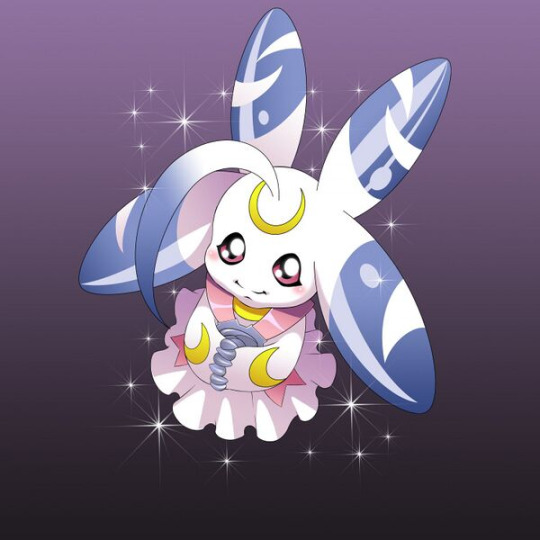

Propaganda below!
Lunamon
Lunamon's lore is that a compilation of moon watching data went into the creation this cute and timid little creature. It's disarmingly adorable.
Moon Hare
1. You know the most famous reference to this tale, is our favorite Sailor: Sailor Moon aka Usagi Tsukino!
2. Whether the bunny is very brave and smart or just dumb, it resulted in a nice annual day!
On the night of the Harvest Moon (the 15th day of the 8th lunar month), people gather to enjoy the beauty of the full moon for Otsukimi (お月見, literally “looking at the moon”). This moon festival, some-times called the Mid-Autumn Festival, is celebrated throughout Asia under different names. The tradition of celebrating the Harvest Moon came to Japan from China in the Heian Period (794-1185), a time known for the aristocrats' dedication to aesthetics and poetry. People would gather outdoors under the full moon and recite poetry, play music, and enjoy seasonal dishes. Over the centuries, it became a popular holiday for all classes to pray for a good harvest, offering fall produce like Sweet Potatoes and Taro to the Moon. Nowadays, Otsukimi is also called Jugoya, meaning "fifteenth night".
Mod note: the submitted image was actually a link to an article, so if you want to view said article, here’s the link https://mingeiarts.com/blogs/celebration-of-mingei-journey-through-japan/tsukino-usagi-the-moon-rabbit-beautiful-center-of-water-rabbits-selfless-and-making-mochi-on-the-moon
9 notes
·
View notes
Text
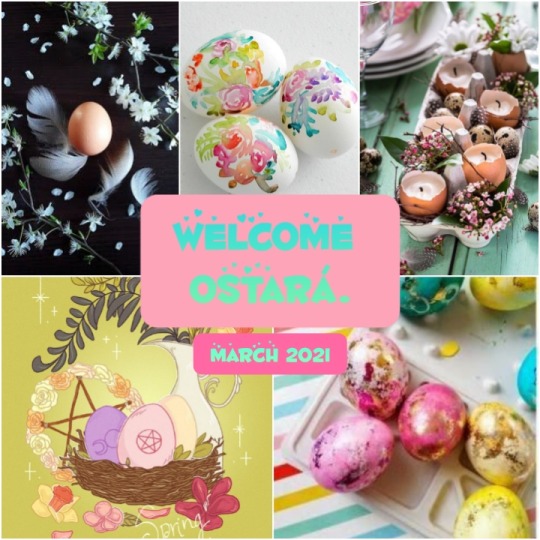
The word Ostara originates from the name of a goddess of spring: Eostre. The symbols of Ostara are strikingly similar to the traditions of Christian Easter.
Ostara is the moment when the sun reaches the highest point in the sky. This happens only twice a year. The first in the spring equinox and the second in the autumn equinox better known as Mabon.
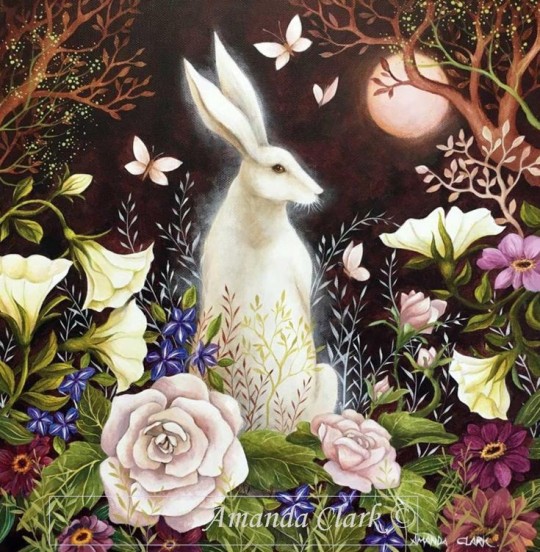
Ostara celebrates the arrival of the season, the arrival of life, the good weather, the fields turn green and are filled with many flowers and the animals begin to breed and the cold and dark days are behind.


The symbols of Ostara are strikingly similar to the traditions of Christian Easter.
Why is this?
To find the Day of the Resurrection of Jesus In 325 the first council of Nice decreed that on the first Sunday after the first full moon after the spring equinox, Easter would be celebrated.

Council of Nicaea
"The Council of Nicea, also known as the First Council of Nicea, was the first ecumenical council of the Christian church, held in ancient Nicea, what we now know as İznik, Turkey. It was named this way by Emperor Constantine I"
☀️Spring equinox. Saturday 20 March 03:37☀️
Ostará is a daytime festival, dedicated to the light and fertility of animals, the countryside and people.

Symbols of Ostará.
🐰🐰🐰
The hare is recognized for its great reproductive capacity, that is why it is related as a symbol of fertility and life.
The Easter egg represents fertility, perfection, life and the resurgence of life.
You can also find me on Instagram as @the.witch.lady
And this month will be dedicated to Ostara, I do not know if the same thing happens to you but whenever I start a week before to prepare everything for this celebration I always run out of time, so I decided to start early to share ideas, recipes, crafts, meditations, rituals and everything to celebrate this beautiful feast of light And what we hope brings us joy in these times of pandemic. Hugs and see you soon.
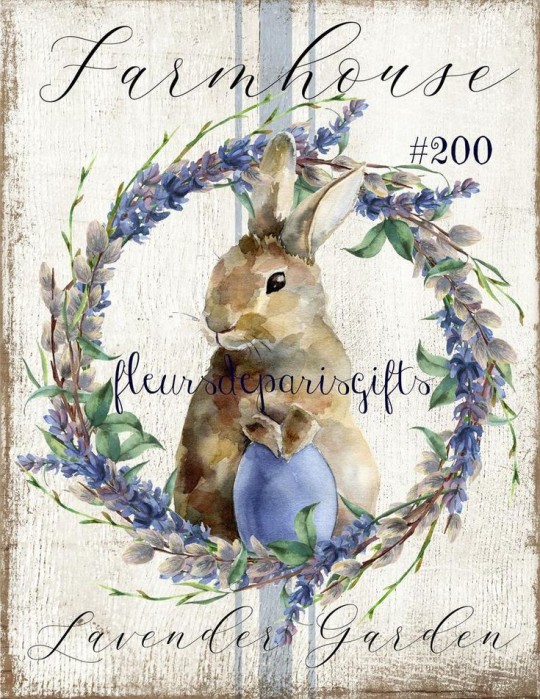
7 notes
·
View notes